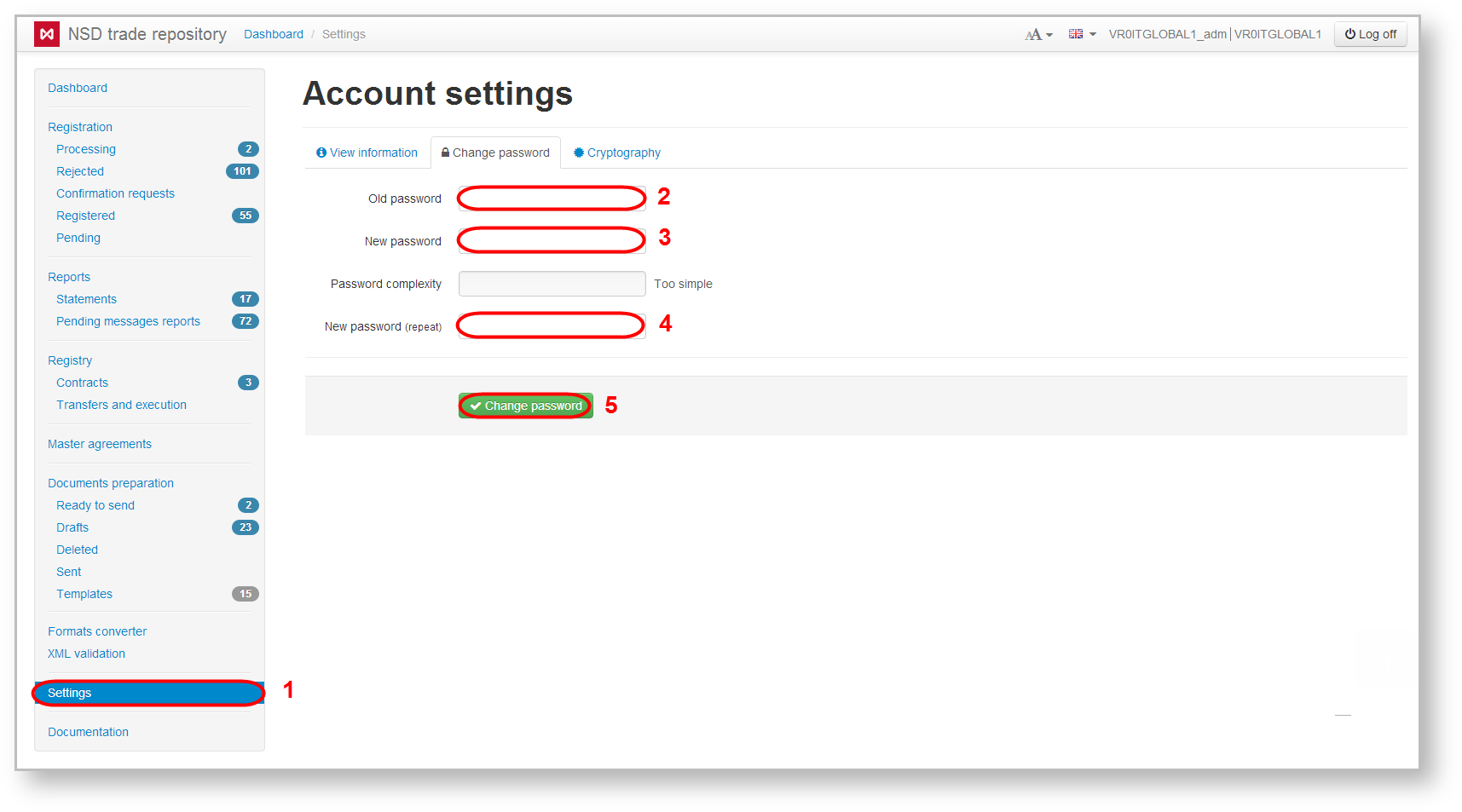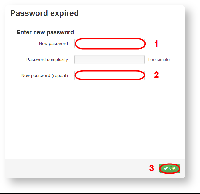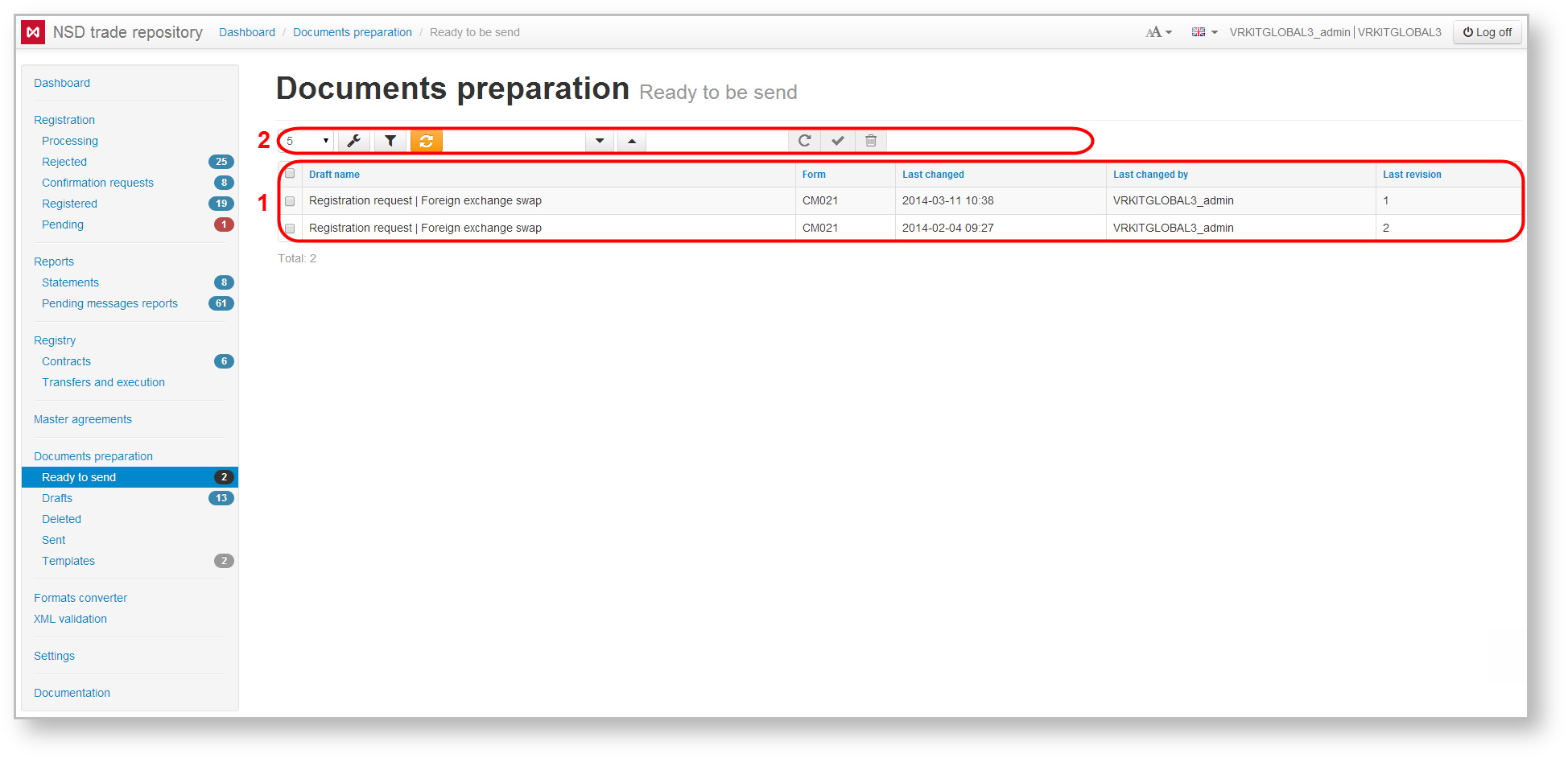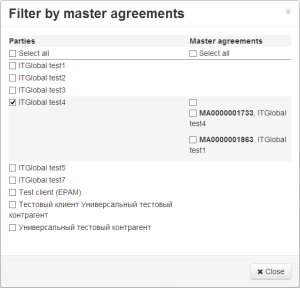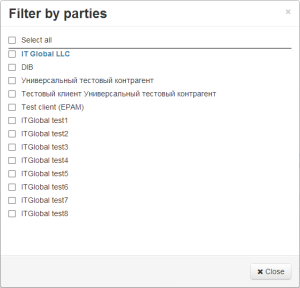Account password settings
- open the Settings form (Fig. 1.1);
- enter old password (Fig. 1.2);
enter new password (Fig. 1.3);
The new password must meet the following strength requirements:- consist of at least ten characters;
- contain Latin uppercase and lowercase letters and numbers.
- confirm new password (Fig. 1.4);
- click Change Password (Fig. 1.5).
Fig. 1 – password change
Password has no expiration term. However, if the password has been changed by technical administrator, the Password has expired form will apeear, and user will need to enter new password (see Fig. 2.1), then repeat the password (Fig. 2.2) and click OK.
Fig. 2 – password change after its expiry
If you forgot the password, contact the technical administrator to create a new password.
Information display settings
The data on master agreements, transactions, reports, applications and other documents are displayed in tables on the Web-client forms (Fig. 3.1).Fig. 3 – Preparation form
For the convenience of working with information the user can do some display settings. Settings are configured using the toolbar, located above the main table (see Fig. 3.2). The toolbar differs depending on the form. All possible buttons are described in Table 1.
Table 1 – Description of the function panel buttons
| Button | Configuration |
|---|---|
Configures the number of rows displayed in the table. After selecting option from the drop-down list it is applied automatically | |
Configures displayed columns. After selecting option from the drop-down list it is applied automatically | |
Configures filters for the table. Clicking on the button opens a block of filter settings | |
Updates table by the selected filters | |
Marks all rows as read | |
Saves all table rows from all pages in one CSV file | |
Switching between the rows of the table | |
Goes to a defined page. Enter a page number in this field, then click the arrow button to go to that page | |
Switching between pages |
The order of data display in the table can be changed by clicking on the column header. A click on the header will display a graphic element that suggests the corresponding order of data display.
Fig. 4 – changing the order of data display
Threads of inactive master agreements are highlighted in yellow. Master agreements treated as inactive in cases when they has been terminated or not registered yet (not confirmed by counterparty).
The name of user’s company that plays a role in the thread (under the master agreement the thread belongs to) is written in green.
Viewed message threads are written in gray.
Settings of displayed columns
The button is used to configure a set of displayed columns. The form of table settings, as exemplified by the master agreement table settings, is presented in Fig. 5.
Fig. 5 – master agreement table settings
The Show hidden column data checkbox controls the display of unmarked columns in additional table rows. The Displayed columns list defines a set of displayed columns. Closing a form automatically applies the specified settings. The example of a table in case if the Show hidden column data box is unchecked, and some of the Displayed columns checkboxes are unchecked, is shown in Fig. 6.
Fig. 6 – example of master agreement table settings (if the Show hidden column data box is unchecked)
Example of a table if the Show hidden column data box is checked is shown in Fig. 7.
Fig. 7 – example of master agreement table settings
Filter settings
Clicking on opens a block of row filters settings for the main table. Depending on the form content, filter settings can be different. Fig. 8 shows an example of a filter settings block for the Processing form of the Registration section.
Fig. 8 – filter settings block for the Processing form
The principle of filter settings is the same for all forms. Filter parameters are selected in the settings block, as a result the table displays information meeting the specified conditions. As exemplified by the Processing form, rows can be filtered by the following criteria:
- by instruments;
- by transaction number;
- by a date range;
- by a set of master agreements;
- by a set of participants.
To make the main table of the form display records by certain master agreements you need to:
- click on on the filter settings bar. This will open the form of filtering master agreements, which contains the list of master agreements, divided by the participants (Fig. 9);
Fig. 9 – example of master agreement filtering block
2. select participants, associated with the defined master agreements by checking the appropriate boxes;
3. choose master agreements by checking the boxes.
Fig. 10 – selecting the party
